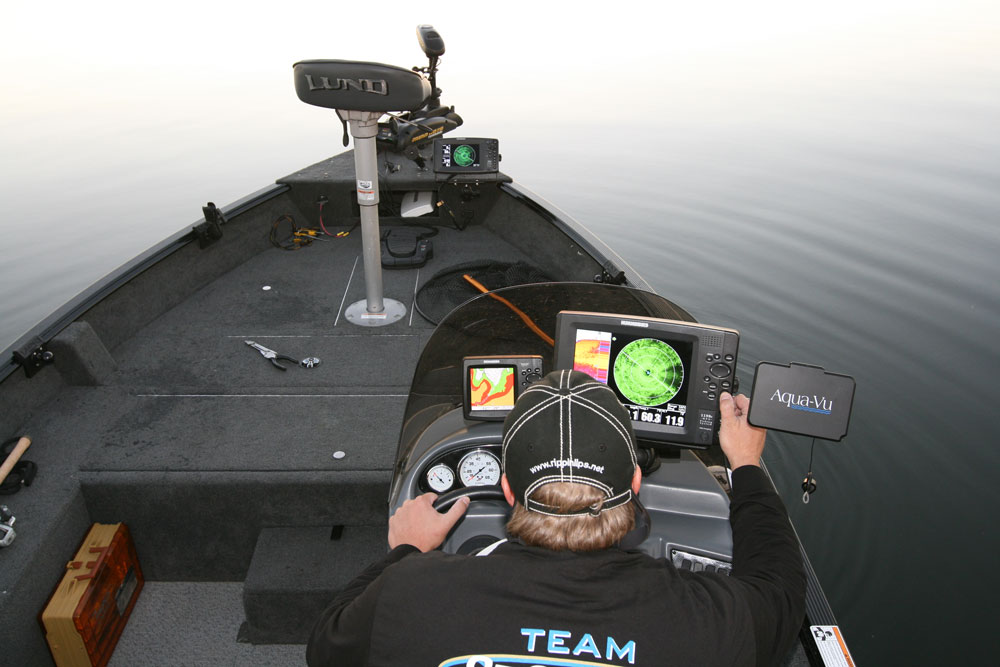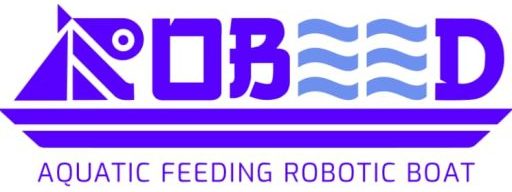
Remote Control and Monitoring of Fish Feeding Boats: Enhancing Control and Monitoring Capabilities for Optimized Feeding Operations
Introduction
In the ever-evolving field of aquaculture, the remote control and monitoring of fish-feeding boats have emerged as game-changing technologies. These advancements have revolutionized fish farm operations, offering enhanced control and monitoring capabilities for optimized feeding operations. By leveraging remote control systems and advanced monitoring technologies, fish farmers can ensure precise and efficient distribution, Which leads to improved fish growth, health, and overall farm productivity. This essay explores the significance of remote control and monitoring in fish-feeding boats, highlighting their benefits, the key technologies involved, and their impact on aquaculture operations.
Benefits of Remote Control and Monitoring
The application of remote control and monitoring systems in fish-feeding boats brings several benefits. Firstly, it enables fish farmers to have real-time control over the feeding process, allowing them to adjust the feed distribution based on the specific needs of the fish and the farm’s conditions. This flexibility ensures that the fish receive the appropriate amount of feed, minimizing wastage and optimizing feed utilization.
Additionally, remote monitoring systems provide fish farmers with valuable data and insights. By remotely tracking feeding operations, farmers can gather information on feed consumption patterns, fish behavior, and environmental conditions. This data enables informed decision-making, facilitating adjustment in feed formulation, feeding schedules, and farm management practices. As a result, farmers can make data-driven decisions that lead to improved feed efficiency, reduced costs, and better overall farm performance.
Furthermore, remote control and monitoring systems enhance biosecurity in fish farms. The risk of introducing pathogens or contaminants into the farm environment is reduced by minimizing human intervention in the feeding process. Fish-feeding boats equipped with remote control capabilities allow farmers to maintain a safe distance from the fish, reducing the potential for disease transmission. Additionally, remote monitoring enables early detection of fish-feeding modalities or signs of disease among the fish population. Prompt identification of health issues allows farmers to take immediate action, implementing targeted treatments or preventive measures to mitigate the spread of diseases and ensure the well-being of the fish.
Another benefit of remote control and monitoring is to optimize feeding strategies based on real-time data. By continuously monitoring factors such as water temperature, dissolved oxygen levels, and fish behavior, farmers can adapt feeding schedules and quantities to match the changing conditions. For example, during high water temperatures, fish may have a decreased appetite, and adjusting the feeding regime can prevent overfeeding and associated negative consequences. This adaptability ensures that the fish receive the right amount of feed at the right time, promoting their growth, health, and overall welfare.
Moreover, the fish-feeding of remote control and monitoring systems enhances farm operational efficiency. Fish-feeding boats can be programmed to follow predefined routes and schedules, automating the feeding process. This automation reduces the need for manual labor and allows fish farmers to allocate their resources more effectively. Farmers can monitor and control multiple feeding boats, optimizing their workforce and streamlining feeding operations across larger fish farms with remote control capabilities. Monitoring and adjusting remote feeding activities also reduces the time and effort required for on-site inspections, as farmers can access real-time data and make informed decisions remotely.
In summary, the benefits of remote control and monitoring systems in fish-feeding boats are diverse and impactful. They enable real-time control over the feeding process, provide valuable data for informed decision-making, enhance biosecurity, optimize feeding strategies, and improve operational efficiency. As aquaculture continues to evolve and strive for sustainable practices, the integration of remote control and monitoring technologies in fish-feeding boats will play a crucial role in ensuring efficient and responsible fish farming operations.
Key Technologies Involved
The remote control and monitoring of fish-feeding boats rely on a combination of cutting-edge technologies. Firstly, the boats are equipped with advanced communication systems, such as satellite or wireless networks, enabling seamless remote connectivity. This connectivity ensures that the fish farmer can monitor and control the boat’s operations from a central location, regardless of the boat’s position within the farm.
Moreover, fish-feeding boats incorporate precision feeding mechanisms. These mechanisms utilize automated dispensing systems, which can be controlled remotely to distribute feed accurately. By employing sensors and actuators, these systems ensure precise feed quantities and uniform distribution, minimizing waste and optimizing feed utilization.
To facilitate monitoring, fish-feeding boats are equipped with various sensors and imaging technologies. Water quality sensors measure parameters like dissolved oxygen levels, temperature, and pH, providing crucial information on the aquatic environment’s conditions. Additionally, underwater cameras and sonar systems enable visual monitoring of fish behavior, feeding patterns, and biomass estimation. This real-time monitoring helps fish farmers assess the effectiveness of feeding strategies and make prompt adjustments when necessary.
Furthermore, advanced imaging technologies, such as thermal cameras or hyperspectral imaging, can be integrated into fish-feeding boats. These technologies allow farmers to analyze the health and condition of the fish, detect early signs of stress or disease, and make informed decisions regarding feed allocation and health management.
The integration of GPS (Global Positioning System) technology in fish-feeding boats enables precise navigation and positioning. GPS systems provide accurate location data, allowing farmers to track the movement of the feeding boat within the farm and ensuring that feed is distributed in the intended areas. This feature is particularly beneficial for larger fish farms with complex layouts, as it ensures that no feeding points are missed and that feed is evenly distributed across the farm.
The use of remote control and monitoring systems also promotes safety for fish farmers and workers. By reducing the need for manual feeding operations, the risk of accidents or injuries associated with handling heavy feed bags or navigating precarious areas is minimized. Farmers can remotely operate the feeding boats from a safe and secure location, ensuring their well-being while maintaining control over the feeding process.
Additionally, remote control and monitoring systems enable data logging and historical analysis. The collected data, such as feeding schedules, feed quantities, and environmental parameters, can be stored and analyzed over time. This historical data provides valuable insights into long-term trends, patterns, and correlations, helping farmers optimize their feeding strategies, refine farm management practices, and make evidence-based decisions for future operations.
In conclusion, the remote control and monitoring of fish-feeding boats bring numerous benefits to aquaculture operations. By leveraging advanced communication systems, precision feeding mechanisms, sensors, and imaging technologies, fish farmers can achieve real-time control over feeding operations, gather valuable data for decision-making, enhance biosecurity, optimize feeding strategies, and improve operational efficiency. As technology continues to advance, the integration of remote control and monitoring systems in fish-feeding boats will play a vital role in ensuring sustainable and efficient fish farming practices.
Impact on Aquaculture Operations
The remote control and monitoring of fish-feeding boats have had a significant impact on aquaculture operations. Firstly, these technologies have improved feed efficiency and reduced costs. With precise control over the feeding process, fish farmers can ensure that the right amount of feed reaches the fish at the right time. This optimization minimizes feed wastage and reduces expenses associated with excess feed. Furthermore, the ability to remotely monitor feeding operations allows farmers to detect and address issues promptly, such as equipment malfunctions or suboptimal feeding practices, minimizing potential losses and maximizing farm profitability.
Moreover, remote control and monitoring systems contribute to environmental sustainability in aquaculture. By enabling precise feed distribution, these technologies prevent excess feed from entering the water, reducing the risk of nutrient pollution and negative impacts on water quality. Additionally, real-time monitoring of water parameters allows farmers to respond quickly to any deviations, ensuring optimal conditions for fish health and growth.
Furthermore, the implementation of remote control and monitoring systems enhances operational efficiency and labor management. Fish farmers can remotely control multiple feeding boats simultaneously, eliminating the need for manual intervention at each feeding point. This automation streamlines operations, reduces labor requirements, and enables better allocation of human resources for other critical tasks on the fish farm.
Conclusion
In conclusion, the remote control and monitoring of fish-feeding boats have revolutionized aquaculture operations, offering enhanced control and monitoring capabilities for optimized feeding operations. The benefits of these technologies, including improved feed efficiency, reduced costs, and better environmental sustainability, have made them indispensable tools for modern fish farmers. By leveraging precision feeding mechanisms, advanced communication systems, and monitoring technologies, fish farmers can ensure precise and efficient distribution of feed while gathering valuable data and insights for informed decision-making. As the aquaculture industry continues to grow and face new challenges, the remote control and monitoring of fish-feeding boats will play an increasingly vital role in achieving sustainable and productive fish farming practices.

